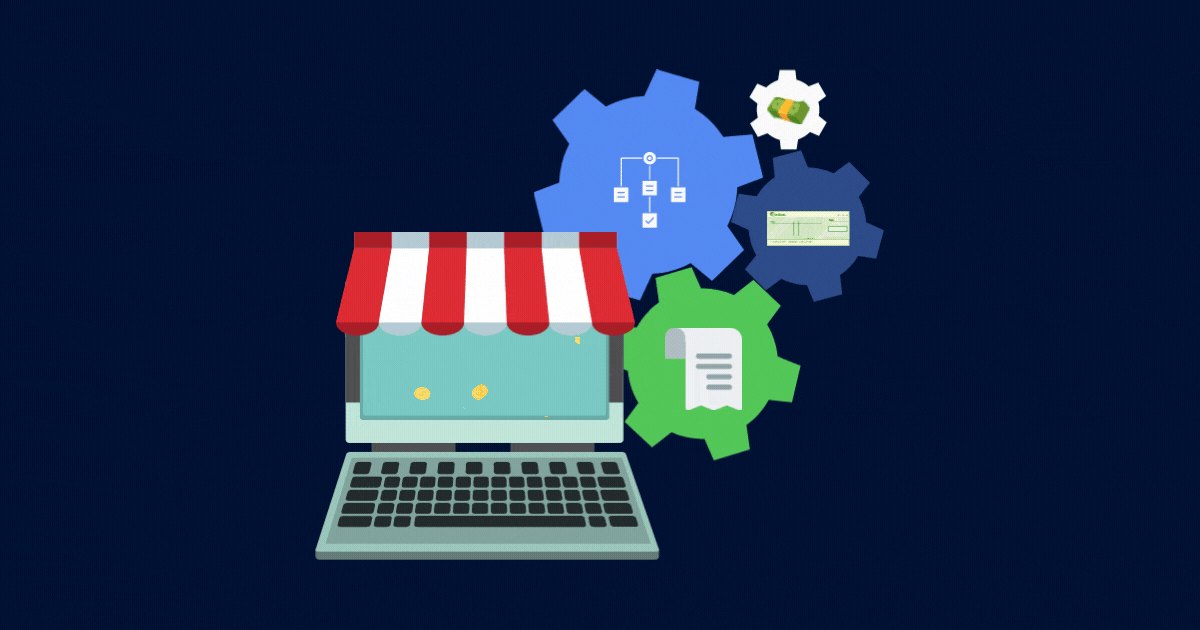
The norm has changed. You have probably heard the phrase “we can never go back to before 2019,” “we can’t go back to normal,” or “the world is divided into before and after 2019.” We have all learned to find ways to combat this unexpected world and adapt to the changes to stay competitive. Small and medium-sized businesses (SMBs) that were once brick-and-mortar need to decide if they will return to their original business model or make a complete transition to online business.
Whether you are an accountant, bookkeeper, or SMB owner, here are the three universal tips for transitioning your brick-and-mortar business to an online business.
Decide on the Right Platform
First up on the list is finding the right online platform to transition your businesses. The platform will vary depending on the type of business that you are own.
However, one universal choice is based on the amount of budget allocated towards transitioning your business online. The company will have an option to build an advanced designed website by purchasing a top-tier theme or template. Furthermore, if your business has more budget, the business can hire a full-time web designer and coder or find the right contractor to build the website from scratch to make it unique and stand out from the competitors. But remember building the website from scratch is costly and will take testing time to ensure it operates accurately.
Accountants and Bookkeepers
If you own an accounting or bookkeeping business, it makes sense for you to choose a website platform like HubSpot, WordPress, Wix, or SquareSpace to create your website. All these platforms allow you to create a website without a coding background, saving costs. Moreover, you can easily integrate any additional features you need for your business. Plus, you can easily start your blog for your business using these website platforms.
Café, Bakery, or Restaurant Owners
As a café, bakery, restaurant, or any food or drink business owner, you have two options to choose from.
Adopting Delivery Platform
Owning a café, bakery, restaurant, or any food-related business, you don’t need to build a website of your own. Instead, you can spend time managing your business listed on different food review websites like Yelp, Zomato, or OpenTable. On top of that, you can start using food delivery platforms like Uber Eats, DoorDash, or SkipTheDishes. However, you have to keep in mind that using a delivery service means that these platforms will charge you approximately 30% commission fees. Delivery services could be double-edged swords. Ensure you calculate beforehand and make enough profit even when the commission is deducted from your revenue. You would not want to waste time transitioning and then realizing that you are not benefiting from the transition.
Offering Pick-Up Only
Suppose your calculation tells you that adopting a delivery platform is not a profitable transition for the business. Another option is creating a website using a platform listed for accountants and bookkeepers, but integrating a payment processing system like Stripe and offering pick-up based on an upfront purchase. You can choose to create a website using a platform like Shopify or Square, where the platform’s payment system is built-in. Collecting advanced payment will protect your business from no-shows.
Physical Product Sellers
If your business sells physical products, it makes sense for you to build your website using an e-commerce platform like Shopify, saving time and money. However, one thing you need to consider ahead of time is how you will handle the delivery. Make sure you have the method and cost for delivery figured out before opening your business online.
Service
If your business is within the service industry, your process will be similar to the accountant or bookkeeper, using HubSpot, WordPress, or Wix to build your website but integrating a scheduler app like Zoom.ai or Square Appointment that allows you to manage your bookings easily. On top of that, you can use a platform like Plooto to manage your payments for the service you provide. Plooto will provide your business with receivable options to collect one-time or recurring payments depending on your terms and agreement with your clients.
Start Building Presence in Social Media
If you already haven’t, you should build your brand presence across social media, including but not limited to LinkedIn, Twitter, Facebook, Instagram, Pinterest, or Tik Tok. Social media plays the most crucial role in getting your business across to potential customers when everyone is staying indoors. Indeed, Forbes’s recent articles stated that “social media is one of the most critical tools in your arsenal.”
Inform Your Existing Clients
There is nothing more important than informing your existing clients about the transition. Most likely, these customers are going to be the first people to take advantage of this transition. Plus, not only will it help to maintain a good relationship with your customers, but they will help to promote the business for free using their social media or through word-of-mouth. What a save in marketing cost and effort!
One Bonus Tip
Since you’ve moved your business online, why not escape from the manual processes to automation, making it easier to manage, track, and reconcile your business payments and receivables. You can adopt Plooto for your finance team to streamline business payments and receivable processes while improving cash flow. 
Conclusion
The new year has begun, but as the struggle to maintain your business continues. Transitioning online can be of great help to your business during these difficult times. Plooto will walk alongside you and your business down this long dark path to see a brighter future.













